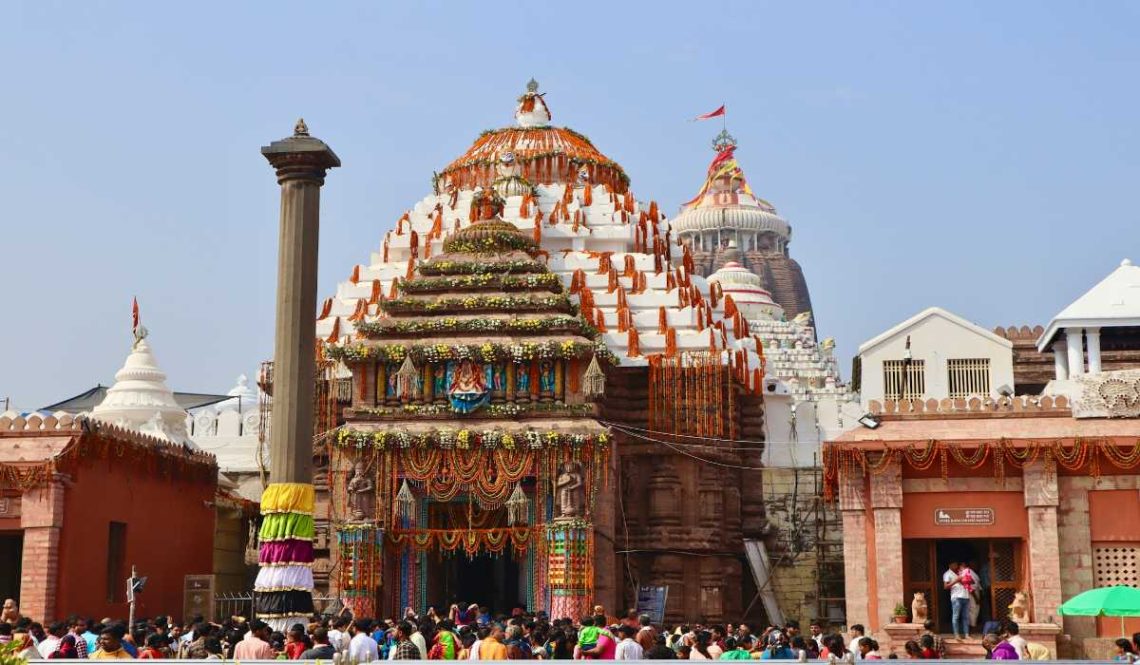
ASI Completes Technical Survey of Jagannath Temple’s Ratna Bhandar
The Archaeological Survey of India (ASI) has successfully completed a technical survey of the Ratna Bhandar, the treasury of the Jagannath Temple in Puri. This survey, which was initially scheduled to last three days, concluded ahead of time on September 22, 2024.
A team from the National Geophysical Research Institute (NGRI) and other experts carried out the survey. They used advanced technologies like laser scanners and ground-penetrating radar. They focused on assessing the structural integrity of the treasury chambers, both inside and out. Their goal was to detect any hidden chambers or tunnels within the ancient structure. Initial results indicate that no such tunnels were found.
This survey marks a significant step toward the conservation and repair of the Ratna Bhandar, which holds valuable ornaments and jewels of the deities. The last time a detailed inventory of the treasury was carried out was in 1978. The results of the survey will guide the next phases of preservation work, ensuring that the treasures remain secure for future generations.
The survey report is expected to be submitted within ten days, after which the authorities will decide on the next course of action for the restoration of the temple’s treasury.
Also Read: The Vedic Age: Key Insights into Ancient Indian History (1500–500 BCE)
Importance of the Jagannath Temple and the Ratna Bhandar
The Jagannath Temple in Puri is one of the most famous temples in India, and it is visited by millions of devotees. It is celebrated for its deep spiritual meaning and beautiful architecture. Inside the temple lies the Ratna Bhandar, a treasury that holds precious jewels and ornaments. These treasures play an important role in the rituals of Lord Jagannath, and they are crucial to the temple’s traditions. Protecting the Ratna Bhandar is important to preserve both the cultural and religious heritage of the temple.
Purpose and Method of the Survey
The recent survey by the Archaeological Survey of India (ASI) aimed to check the condition of the Ratna Bhandar and see if any repairs are needed. A team of experts used modern tools, like laser scanners and ground-penetrating radar, to examine the walls and floors of the treasury. This high-tech equipment helps them understand the structure without damaging it, ensuring that the building stays safe.
History of the Ratna Bhandar
The last time a detailed check of the Ratna Bhandar was done was in 1978. Since then, the treasury’s inner chamber has not been opened often because the keys were lost. Although part of the outer chamber was opened in 2018, the inner chamber remained untouched. This latest survey marks a big step in studying and preserving the treasury after many decades.
Spiritual Value of the Treasures
The jewels and ornaments in the Ratna Bhandar are not just valuable in terms of money; they have deep spiritual meaning. They are linked to ancient temple rituals and are considered sacred by the devotees. Protecting them is a responsibility that the temple and the government take very seriously.
Steps for Preservation
The ASI will receive a detailed report from the survey team soon, which will help them decide what needs to be done next. This may include repairs to ensure that the Ratna Bhandar is safe and secure. These efforts will help preserve this important part of India’s heritage for future generations.
Impact on Pilgrimage and Local Economy
The Jagannath Temple is part of the Char Dham pilgrimage and attracts millions of visitors every year. Making sure the Ratna Bhandar is well-preserved is important not just for religious reasons but also for the local economy, which benefits greatly from the temple’s visitors. By protecting the temple and its treasures, the authorities are also helping the local businesses that depend on tourism.
Takeaway
The completion of this technical survey is a major step in ensuring the safety of the Ratna Bhandar. As the next steps are planned, this initiative shows how modern technology can be used to protect ancient cultural treasures.
Khushi Jha
I am Khushi Jha, a proud alumna of Delhi University with a degree in History and Political Science. My fascination with the events that have shaped our world drives me every day. Currently, I am pursuing my Master’s in History, diving even deeper into global dynamics and the incredible heritage of India. I firmly believe that India's rich heritage deserves wider recognition. I strive to bring its stories to the forefront, ensuring they are celebrated and acknowledged on a global stage. I have written extensively across various niches, including fashion, health, lifestyle, real estate, hospitality, amongst others. In my free time, you’ll find me immersed in books, both fiction and non-fiction, or simply enjoying some much-needed rest.
You May Also Like

Tracing the Origins of Diwali: The Festival’s Roots in Indian History
October 19, 2024
NAJ Cosfest 2025: A Complete Guide to Northeast India’s Biggest Anime and Cosplay Festival
June 11, 2025



One Comment
Pingback: